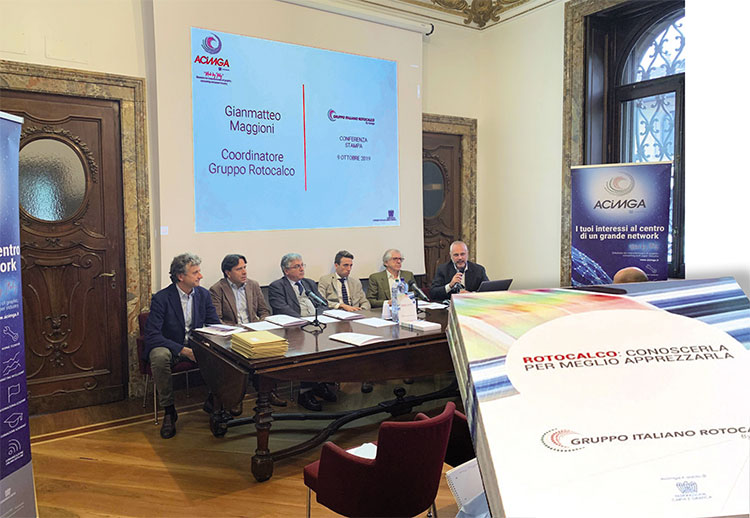Communicating rotogravure
A study by Acimga intends to give new vigor to rotogravure, promoting the potential of an Italian excellence.


Once considered the “queen” of printing technologies due to its high quality and the excellent price per printed meter ratio, rotogravure is today little known and little considered, above all by brand owners and marketing and communication operators. To give it back its due prestige and promote its usage, highlighting its vast potential in every field, from printing to packaging, the ACIMGA Rotogravure Group (the Association Acimga combines the main Italian manufacturers of printing machines) has produced ““Loving Rotogravure: Know it to appreciate it”, a publication presented on 9 October in the association’s Milan branch.
According to project coordinator Gianmatteo Maggioni, «up to now rotogravure operators have skimped on communication and promotion», perhaps trusting in the technological validity in itself and in the awareness that Italy, besides possessing the best know-how in the world and a long tradition in machine and component production plus cylinder engraving, is the second European country in terms of number of print companies and installed machines.
The manual, drawn up by Maggioni together with Giovanni Daprà, Carlo Carnelli, Giuseppe Gianetti, Angelo Aloggia and Sergio Santarlasci, is accompanied by a useful glossary and describes all aspects of rotogravure printing: history, process, prepress, color, cylinder production, inks and varnishes, doctor blade and pressor, addressing printers, brand owners, marketing and creative managers, but also graphic schools and in general to the training of young people, now attracted above all by the digital world.
It needs to in fact change the current perception of young people, who tend to relegate non-digital printing to a universe of technologies erroneously judged as “old”, in order to create a new generation of operators who are thoroughly familiar with both the techniques and the international standards and regulations necessary to respond to the requests of brand owners.
But printers must also be persuaded to abandon their closed off approach and become more attuned to informing and communicating with the media, customers and schools. To reach these ambitious goals, the Rotogravure Group has devised an articulated project, of which this publication is but the first step, in addition to the production of new documents, to be followed by the organization of undertakings and promotional activities.




















